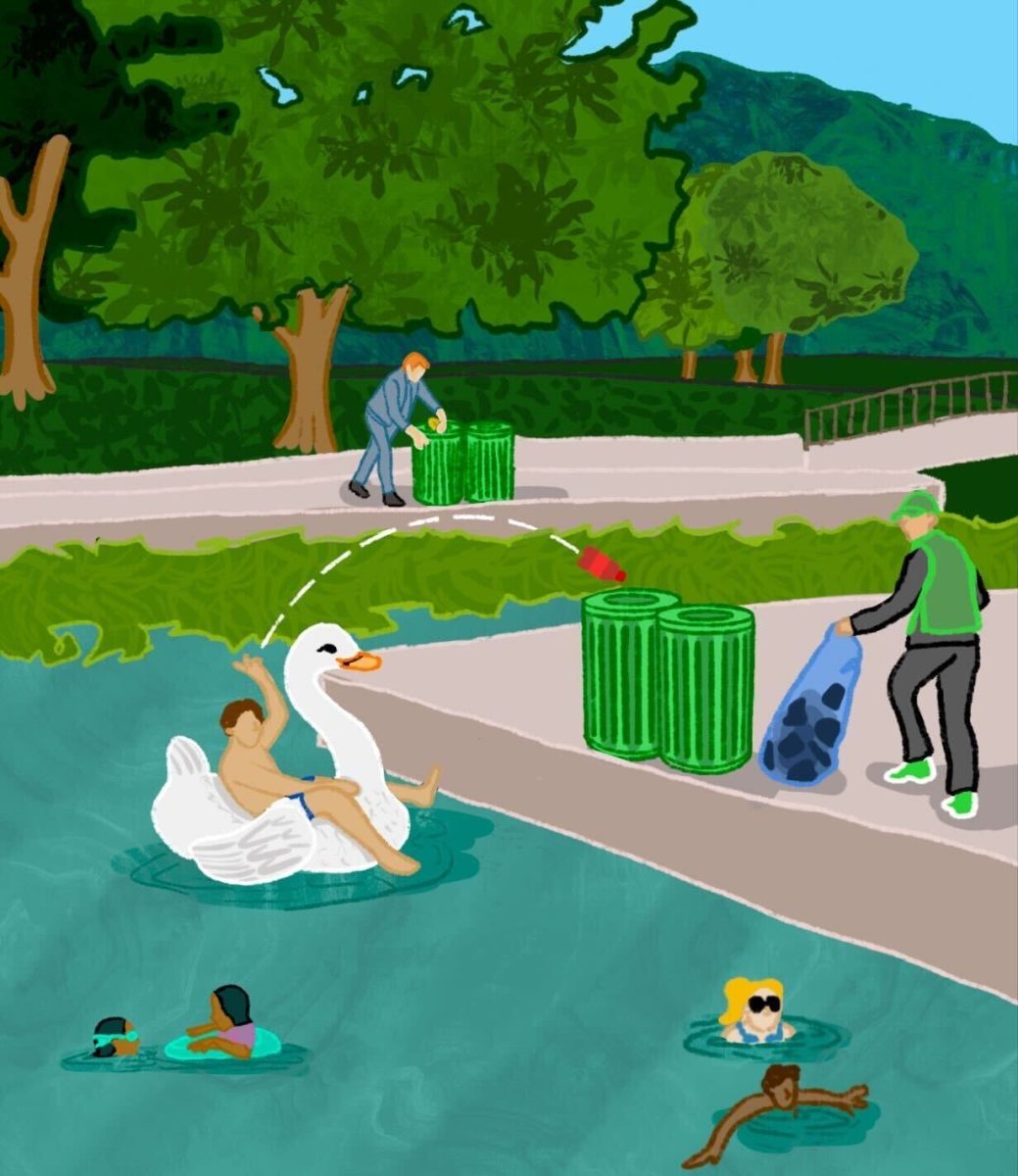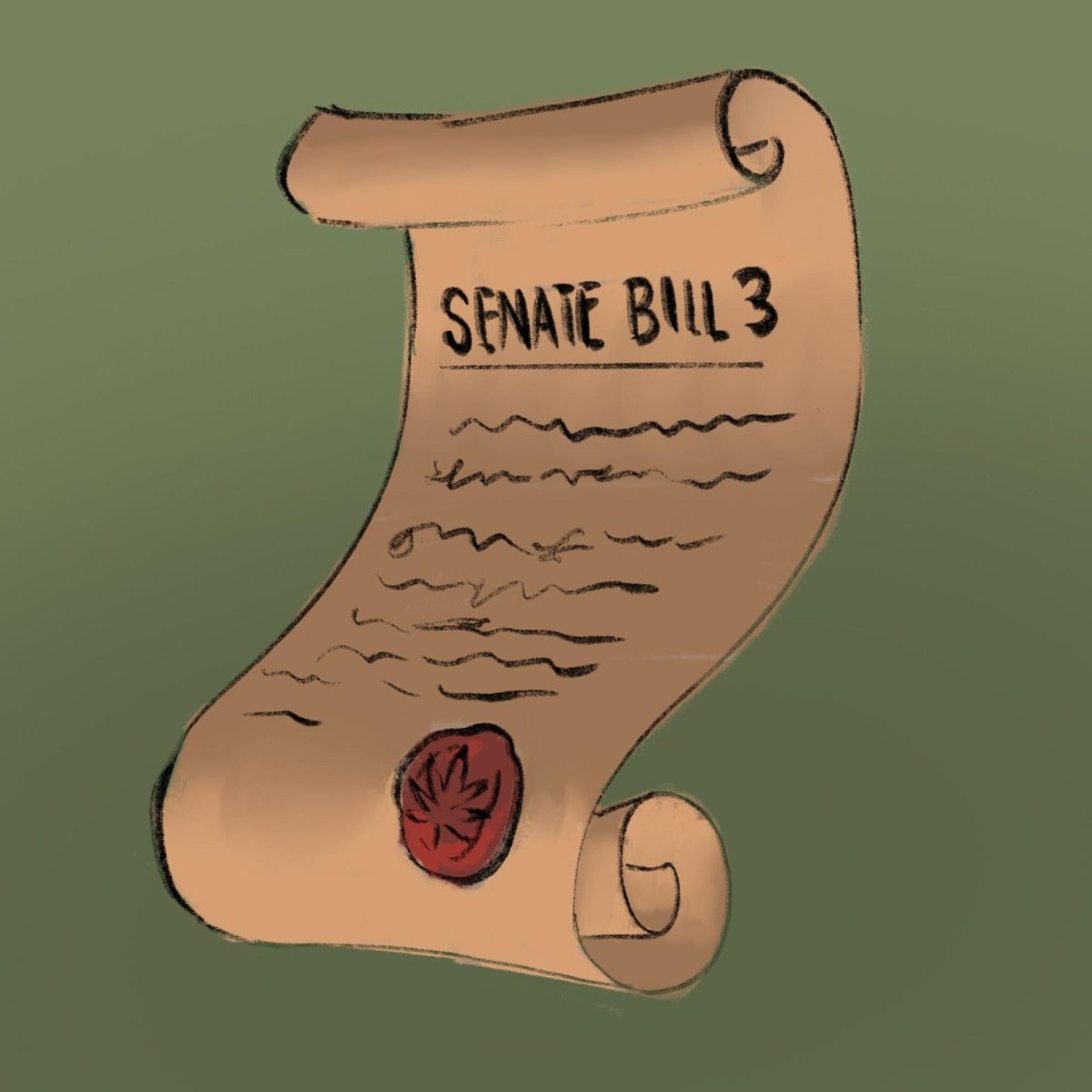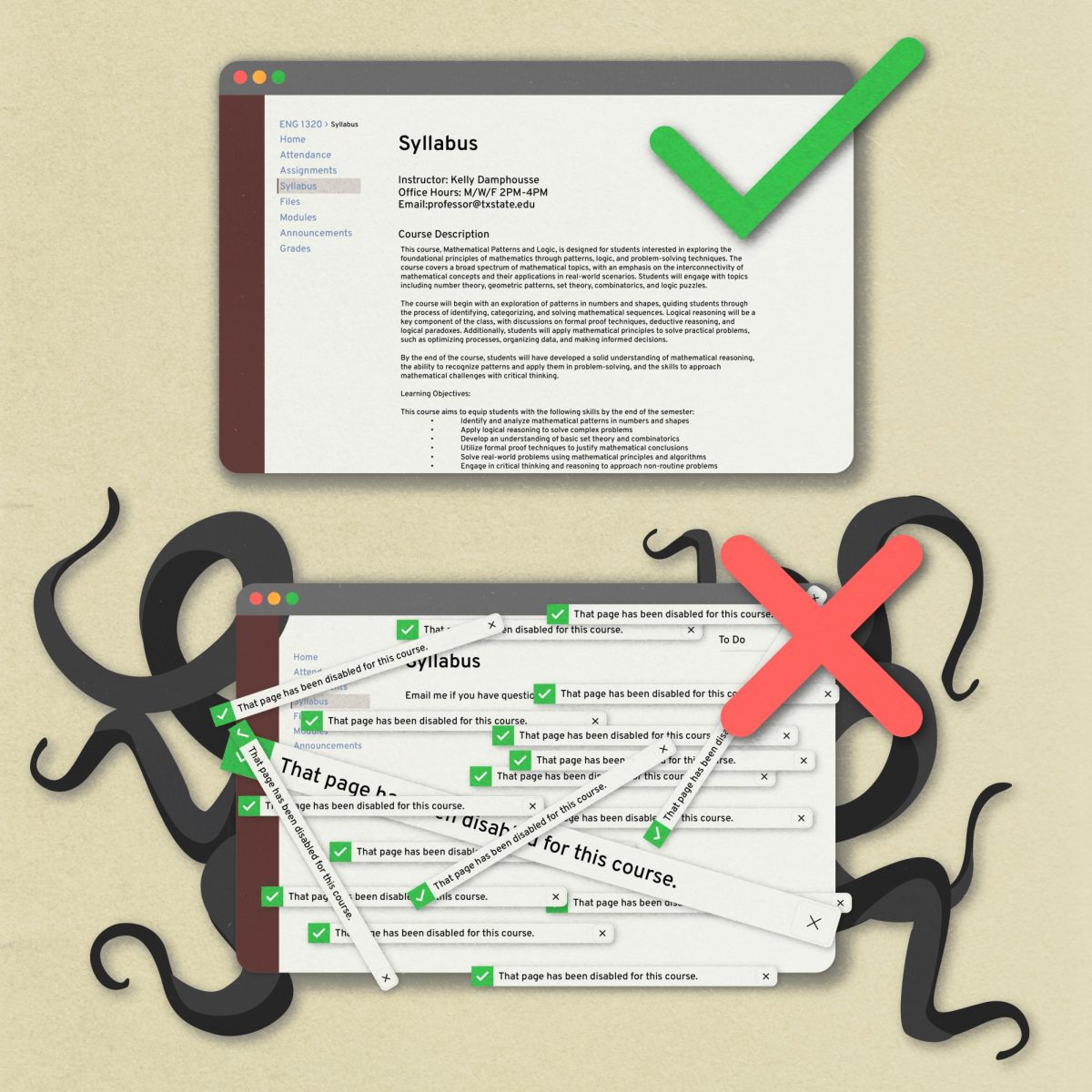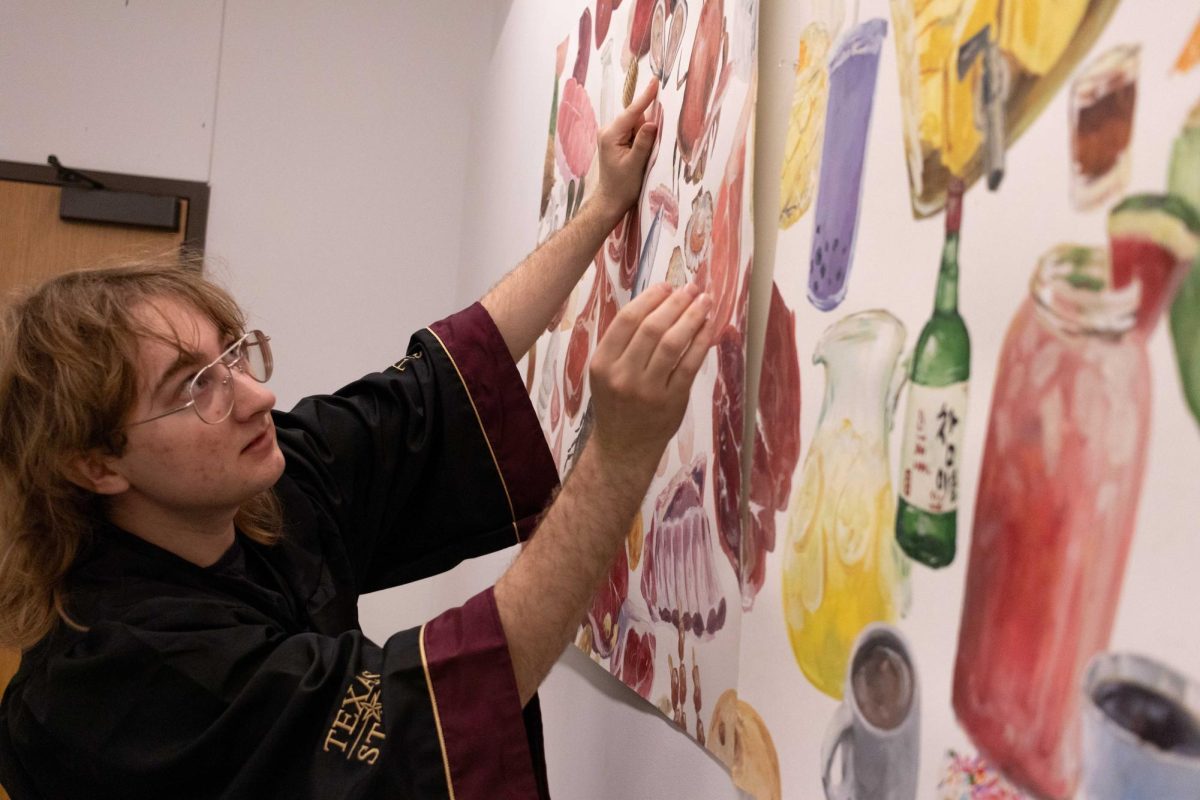Each student contributes $1 toward the Environmental Services Fee, or ESF, with their Texas State tuition and fees payment. Increasing the fee would give the Environmental Services Committee, or ESC, who disburses the funds collected from the fee, more money with which our campus could be improved.
Since 2004, the ESF has raised thousands of dollars for projects allowing Texas State to become a greener campus.
The ESF has provided campus with several features many students take for granted, such as energy-efficient LED lights in the Student Recreation Center, water bottle refill stations integrated into water fountains across campus and maintenance from the Bike Cave. Whether students know they were only made possible through the ESF or not.
Still other projects, like biology graduate student Rebekah Rylander’s campus nest boxes for cavity-nesting birds, likely go completely unnoticed despite their role in research. These funds can be used for a wide array of services from recycling to research grants to employment in sustainability monitoring roles.
The projects paid for by the ESF are not a one-time purchase. Many of them require more funds for periodic upkeep—even energy-efficient lights need to be changed and replaced.
Money collected by the committee, which could go toward new projects on campus, is often put toward the continuation of existing projects.
Much of the funding provided by the ESC goes toward the Meadows Center for Water and the Environment, which since 2012 has provided critical education about water and environmental stewardship for our central Texas communities. In 2018, the ESC granted the Meadows Center funds for a garden to feed monarch butterflies, and the signage seen around Spring Lake was created using ESF money.
Increasing the ESF for students would not be a burden any more significant than our regular tuition increases.
Other universities, like Texas A&M, charge as much as $5 per student per semester to fund similar programs. Increasing the ESF to that extent would quintuple the ESC’s available funds, allowing them to have ample funds for new projects as well as for maintenance of established ones.
Even increasing the fee to $2, as proposed by student body presidential and vice presidential candidates Cody DeSalvo and Eduardo Camargo, would double those funds.
As of Feb. 12, their opponents Valentinis-Dee and Florence won the election and will lead the next Student Government administration. Valentinis-Dee and Florence never addressed the ESF during their campaign. However, it is important to note that no candidate for any student body office could make such a promise alone.
According to Texas Education Code § 54.5111, an increase in the ESF would require a majority vote in an election voted in by at least 1,000 students.The law states that that fee may be increased all the way to $6 per student per regular semester— though starting small may be a more realistic way to go. Raising the ESF to $3 would give a much-needed boost to campus sustainability initiatives.
After 16 years, our campus has grown from about 22,000 students to nearly 40,000 students—it is only logical that our ESF should increase to support a larger campus population.
Many students already support causes like the Meadows Center, and a single glass-bottom boat ride costs roughly the same as the maximum amount Texas State students could be paying in fees every semester to support the Meadows Center and other green projects in our community.
Working together, our Student Government could put an ESF increase on the ballot in our next election—it is the best choice to keep our campus sustainable.
-Toni Mac Crossan is a biology graduate student
Opinion: Increase the Environmental Services Fee
February 25, 2020
0
Donate to The University Star
Your donation will support the student journalists of Texas State University. Your contribution will allow us to purchase equipment and cover our annual website hosting costs.
More to Discover














